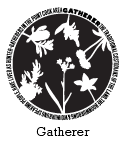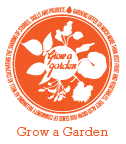Radish | Raphanus sativus
The radish is a root vegetable available in a range of sizes, shapes and colours. Its name is derived from the Latin word ‘radix‘ meaning root.
Radishes are easy to grow and mature quickly, making them very popular in children’s gardens. Radishes grow best in full sun. As with other root plants, aerating the soil encourages the roots to grow.
Radishes are rich in ascorbic acid, folic acid, potassium and are a good source of vitamins, magnesium and calcium. The bulb of the radish is usually eaten raw and has a crisp texture and peppery flavour. Radishes are used in salads.
Apple | Malus domestica
The apple is one of the most widely cultivated tree fruits. There are many varieties such as the golden delicious and the granny smith.
The apple forms a small, deciduous tree in spring. Whitish-pink blossoms are produced while their leaves bud, and the fruit matures in autumn. Apples are usually grown by the practice of grafting, which is when two plants are joined by inserting part of a plant into the root or stem of another plant.
Grape | Vitis
Grapes are a perennial fruit, rich in antioxidants and grown on deciduous woody vines. There are many varieties with either black or white fruit. Some are suitable for wine, others for juice, while others can be eaten raw or dried. Dried grapes are known as raisins.
Pear | Pyrus
The pear is a perennial fruit grown on deciduous trees that flourish in mild, moist climates. It is grown in a similar way to the apple. The flowers are white and the pear flesh contains a large seed. They can be eaten fresh, baked or made into jam or juice. The pear is rich in vitamins and potassium.
Pumpkin | Cucurbita
The pumpkin is an orange vegetable with a thick shell, seeds and pulp. The name is derived from the Greek word ‘pepon’ meaning ‘large melon’.
Most parts of the pumpkin can be eaten and when ripe it can be boiled, baked, steamed or roasted. Pumpkin seeds, also known as pepitas, are a good source of protein, zinc and antioxidants.
Carrot | Daucus carota
The carrot is an orange root vegetable with a crisp texture. It is a biennial vegetable that can be eaten in a variety of ways – raw, boiled, fried, steamed, stewed and grated. Carrots are rich in dietary fibre, antioxidants, vitamins and minerals and can be made into a healthy juice.
Cherry | Prunus
The cherry is a fleshy stone fruit. Some cherry shrubs or trees are grown for their fruit, while others for their foliage (plant leaves). Cherries have a very short growing season, and peak in summer. They are a good source of antioxidants and minerals.
Raspberries | Rubus Idaeus
The raspberry is a perennial fruit grown in a bush and its name means ‘with red fruit’. Traditionally a summer fruit and planted in winter, it responds well to ample sun and water. The flowers are a major source of nectar for honeybees. Raspberries can be eaten raw or made into jam and the leaves can be used fresh or dried to make herbal teas. They contain significant amounts of antioxidants and are a rich source of vitamin C, manganese and dietary fibre.
Further Reading
Blazey, C., & J. Varkulevicious (2006). The Australian Fruit and Vegetable Garden, Digger’s Club, Dromana, VIC.
Crocombe, A., (2006). Fruit and Vegetable Farming, Echidna Books, Port Melbourne, VIC.
500 Popular Vegetables, Herbs, Fruit and Nuts for Australian Gardeners, Random House, Milsons Point, NSW.







